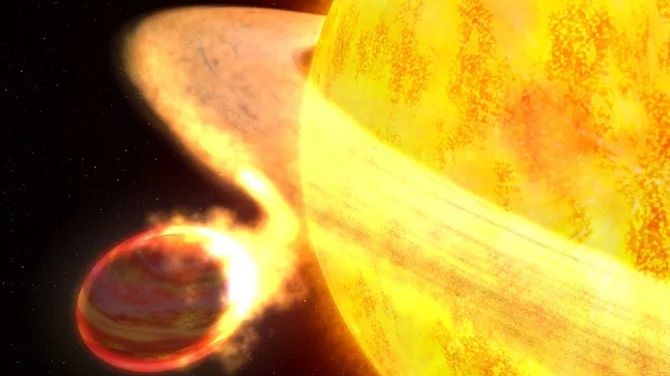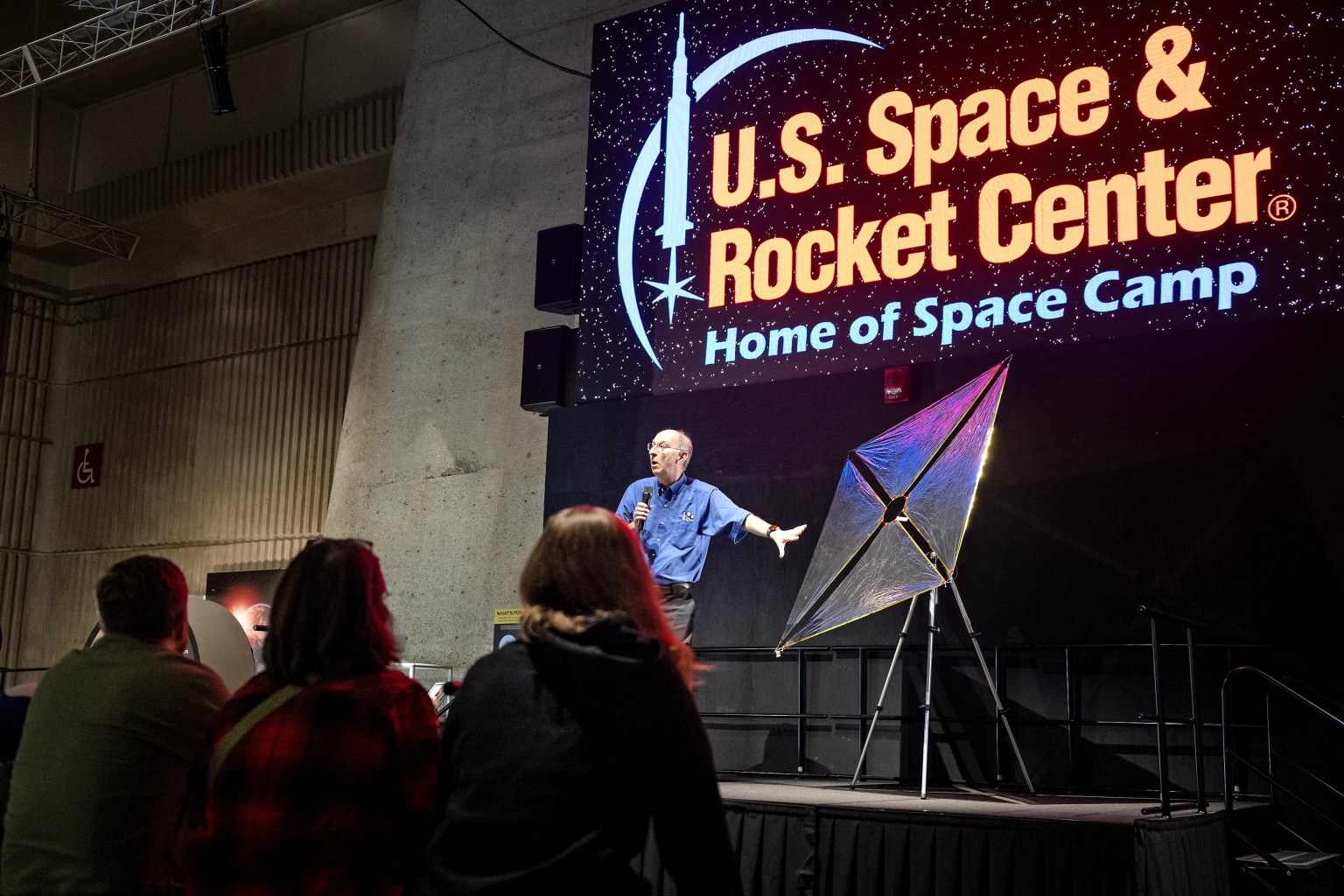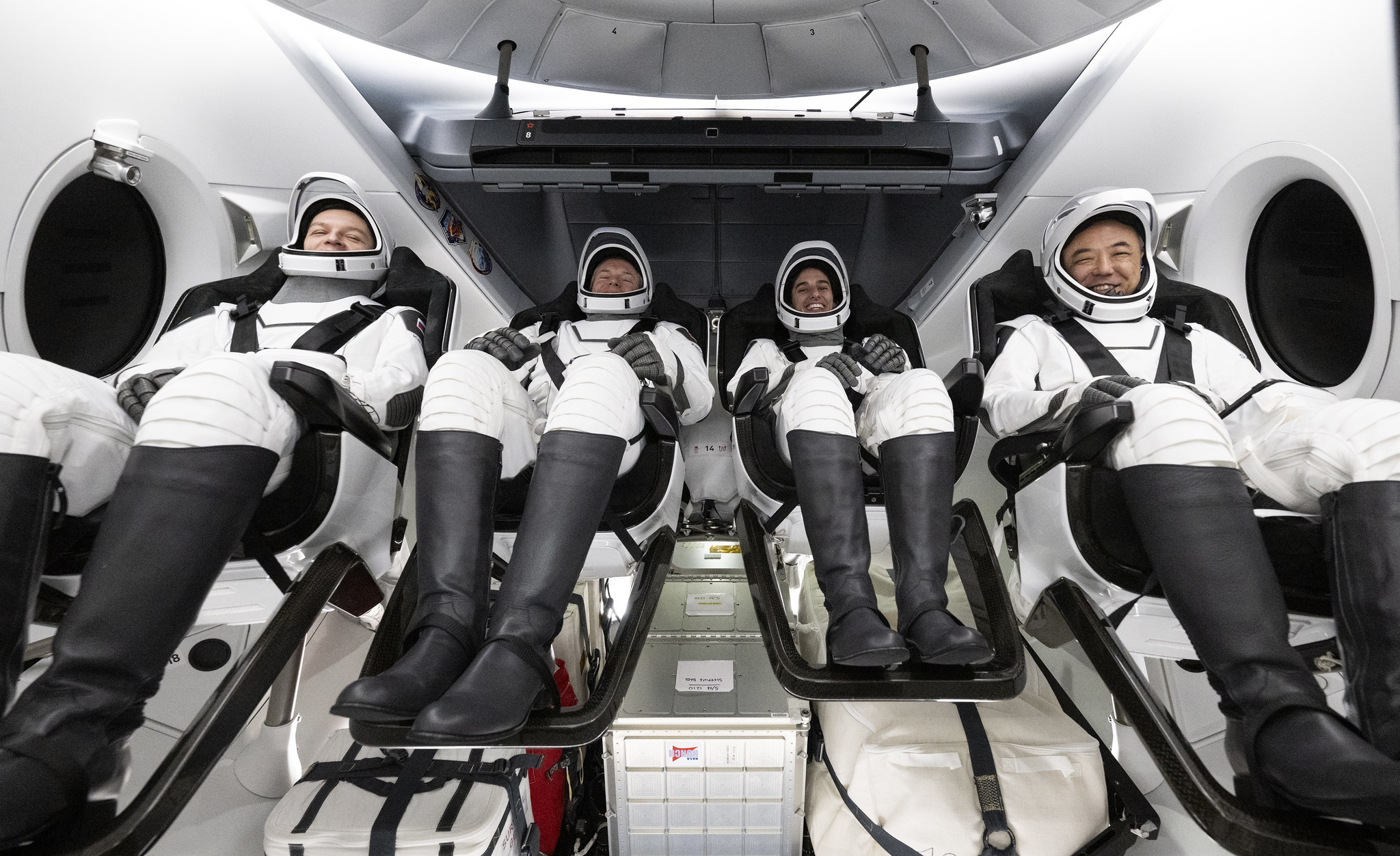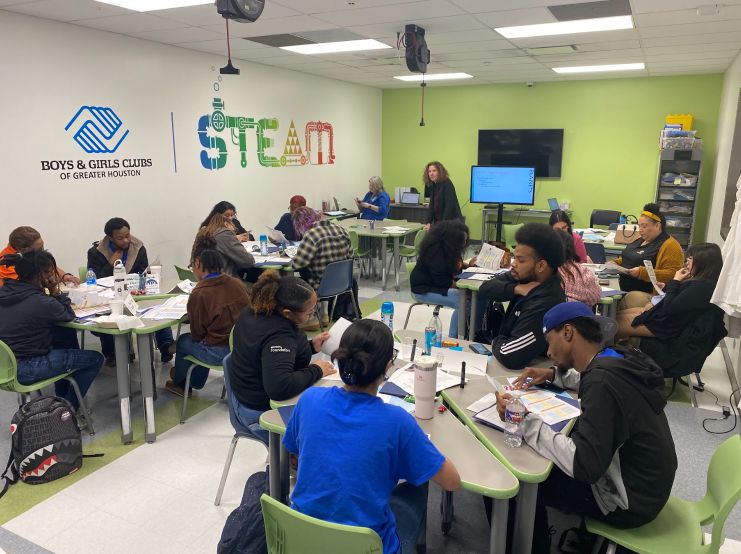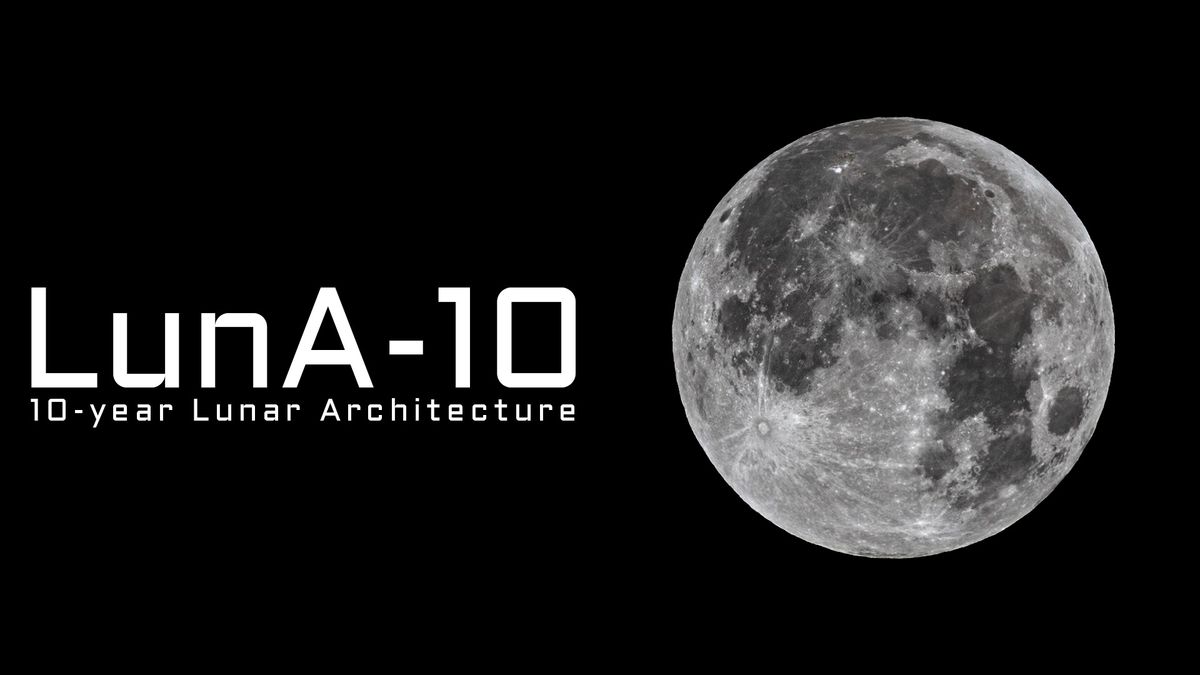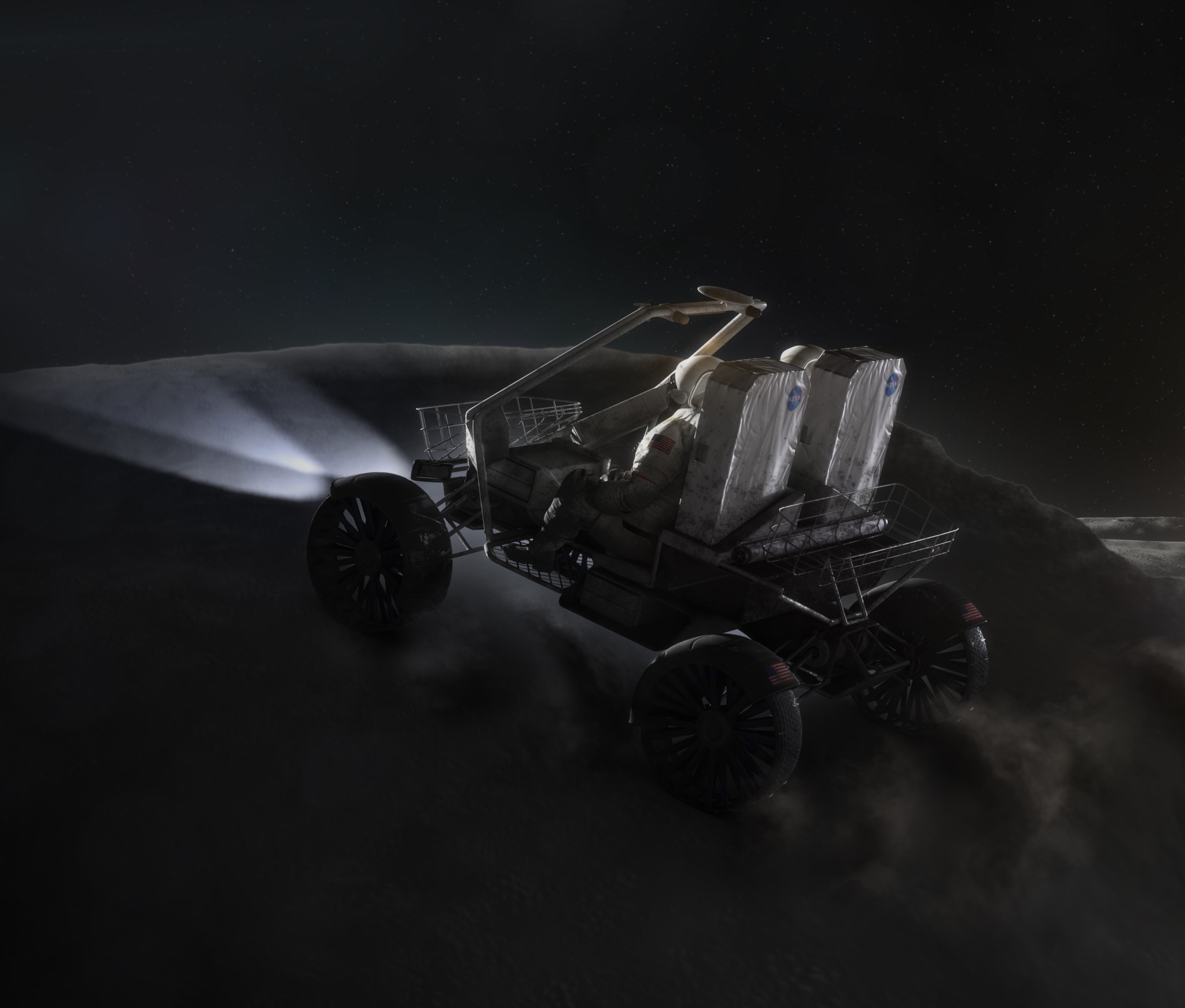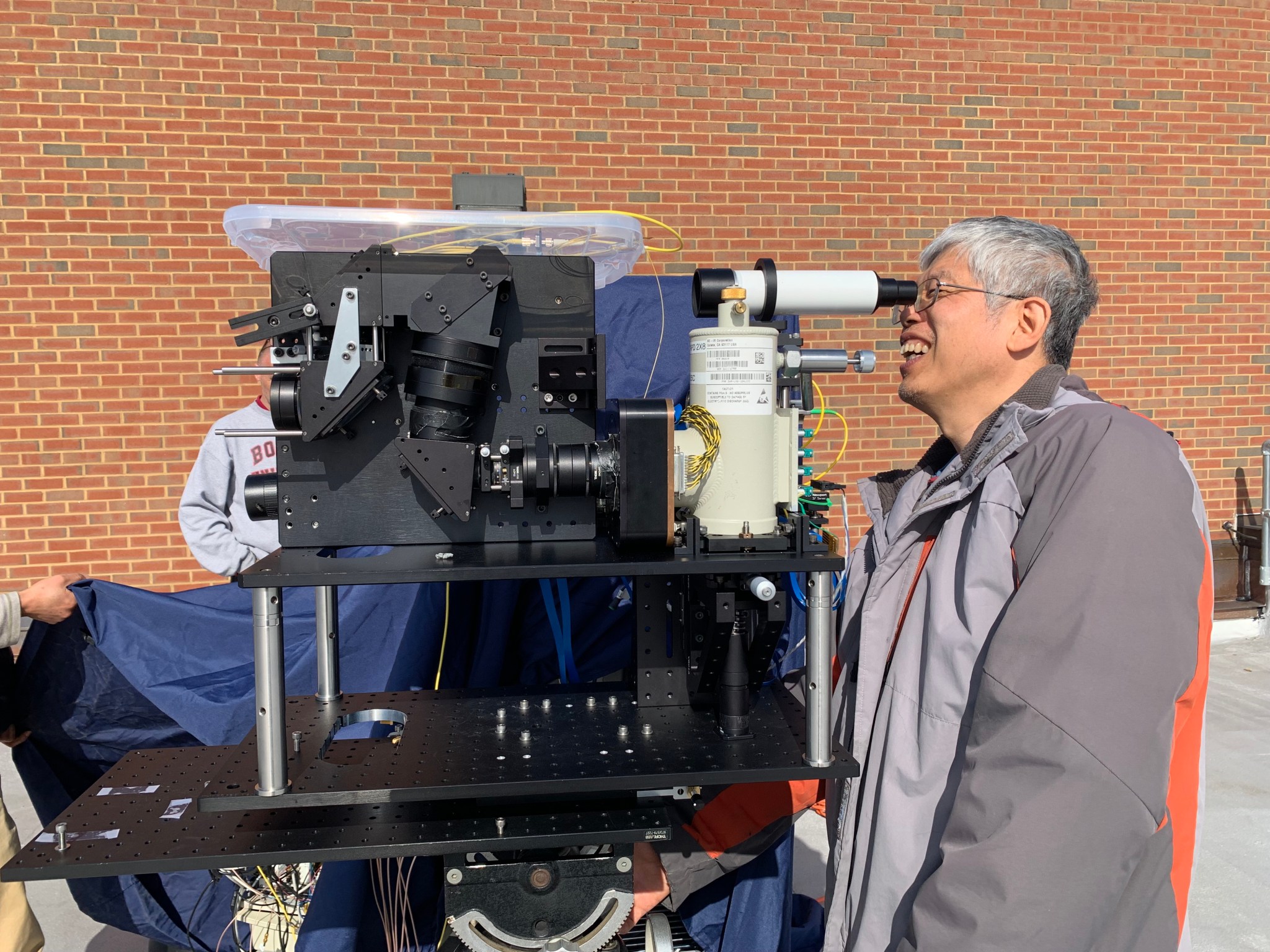About one in every 12 stars may have swallowed a planet, a new study finds. Previous research had discovered that some distant stars possess unusual levels of elements, such as iron, which one would expect to make up rocky worlds such as Earth. This and other evidence suggested that stars may sometimes ingest planets, but much remained uncertain about how often that might happen. One way to uncover more about planetary ingestion is to look at two stars born at the same time. Such twins should have a virtually identical…
Read MoreMonth: March 2024
The Marshall Star for March 20, 2024
22 Min Read The Marshall Star for March 20, 2024 Marshall Technologist Talks Solar Sail Technology in Rocket Center Exhibit By Jessica Barnett Space enthusiasts at the U.S. Space & Rocket Center were treated to a special exhibit featuring technologist Les Johnson of NASA’s Marshall Space Flight Center and a look at the future of solar sail technology. NASA technologist Les Johnson, on stage, discusses how the solar sail can use solar propulsion to travel farther in space than anyone has traveled before during an exhibit held March 12 at…
Read MoreFollowing Safe Return, NASA’s SpaceX Crew-7 to Recount Space Mission
The four crew members of NASA’s SpaceX Crew-7 mission are seated inside the SpaceX Dragon spacecraft after landing in the Gulf of Mexico on March 12, 2024. Credits: NASA/Joel Kowsky After spending 199 days in space, NASA’s SpaceX Crew-7 crew members will discuss their science mission aboard the International Space Station during a news conference at 2:30 p.m. EDT Monday, March 25, at the agency’s Johnson Space Center in Houston. NASA astronaut Jasmin Moghbeli, ESA (European Space Agency) astronaut Andreas Mogensen, JAXA (Japan Aerospace Exploration Agency) astronaut Satoshi Furukawa, and…
Read MoreIt Takes a Village: Meaningful Collaborations to Broaden Participation in STEM
3 min read It Takes a Village: Meaningful Collaborations to Broaden Participation in STEM The NASA Science Activation Program’s Planetary Learning Advancing the Nexus of Engineering, Technology, and Science (PLANETS) project team, led by Northern Arizona University, Engineering is Elementary, United States Geological Survey (USGS) Astrogeology, and WestEd, develops planetary science and engineering curricula for Out-of-School Time (OST) programs such as afterschool and summer camps. PLANETS is employing a co-design approach to optimize the curricula to broaden participation in Science, Technology, Engineering, and Mathematics (STEM) with a focus on multilingual…
Read MoreOcean Worlds Planetary Scientist Dr. Lynnae Quick
“I’ve come a long way from thinking, ‘Well, I did this whole dissertation on geysers, what it would take for them to erupt, for a spacecraft to see them, and that people might not take me seriously as a scientist because of it,’ to being on the Europa Clipper camera team involved in investigating these plumes and ensuring we can image them if they’re there. It’s a full-circle moment.” – Dr. Lynnae Quick, Ocean Worlds Planetary Scientist, NASA’s Goddard Space Flight Center
Read MoreDARPA picks Northrop Grumman to develop ‘lunar raiload’ concept
Railroads could open the moon to serious and sustained economic development, as they did in the American West in the late 19th century. That’s apparently the hope of the U.S. Defense Advanced Research Projects Agency (DARPA), which is supporting the development of a “lunar railroad” concept proposed by aerospace giant Northrop Grumman. “The envisioned lunar railroad network could transport humans, supplies and resources for commercial ventures across the lunar surface, contributing to a space economy for the United States and international partners,” Northrop Grumman representatives wrote in a press statement…
Read MoreFull Worm Moon brings 1st lunar eclipse of 2024 next week. Here’s how to see it
During the next two weeks, there will be two eclipses on the astronomical docket. The main event, of course, will be the Great North American Eclipse on April 8 that will stretch from the Pacific coast of Mexico, on to Texas and across southern and eastern portions of the United States and Atlantic Canada, before coming to an end over the north Atlantic Ocean. But two weeks before the total solar eclipse, during the overnight hours of March 24-25, it will be the moon’s turn to undergo an eclipse; a…
Read MoreA new ultrablack coating for telescopes could bring more stars into focus
The images we get these days from advanced telescopes, such as the James Webb Space Telescope, undoubtedly leave us in awe and wonder of galaxies that exist light-years away from Earth. But what if these pictures could be improved even more?Researchers from the University of Shanghai for Science and Technology and the Chinese Academy of Sciences hope they’re able to help with just that through their development of a thin, ultrablack film coating for aerospace-grade magnesium alloys. Think about it this way — when you want to see the stars…
Read MoreNASA to Select Lunar Terrain Vehicle for Artemis Missions
Artist’s concept of a Lunar Terrain Vehicle on the surface of the Moon. Credits: NASA NASA will host a news conference to announce the company, or companies, selected to move forward in developing the LTV (Lunar Terrain Vehicle), which will help Artemis astronauts explore more of the Moon’s surface on future missions. The televised event will take place at 4 p.m. EDT (3 p.m. CDT), Wednesday, April 3, at the agency’s Johnson Space Center in Houston. The news conference will air live on NASA+, NASA Television, the NASA app, and the agency’s website. Learn…
Read MoreNASA, Industry Improve Lidars for Exploration, Science
5 min read Preparations for Next Moonwalk Simulations Underway (and Underwater) NASA engineers will test a suite of new laser technologies from an aircraft this summer for Earth science remote sensing. Called lidar, the instruments could also be used to improve models of the Moon’s shape and aid the search for Artemis landing sites. Similar to sonar, but using light instead of sound, lidars calculate distances by timing how long a laser beam takes to reflect off a surface and return to an instrument. Multiple pings from the laser can…
Read More